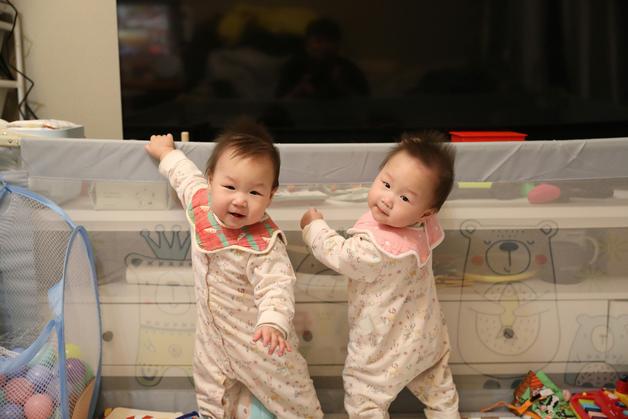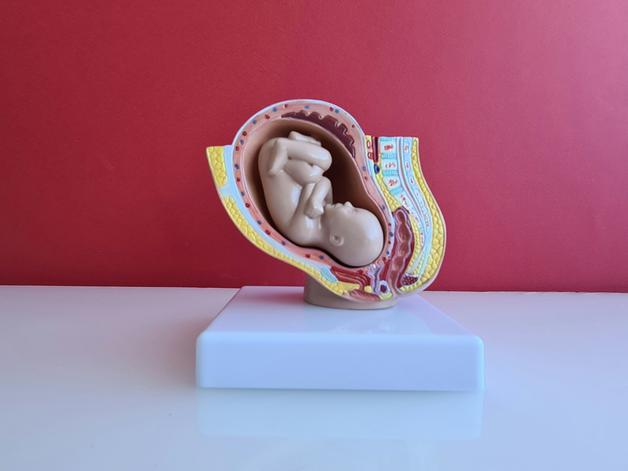The moment that ultrasound announces boy-girl twins, a surge of questions and emotions sweeps through—double the joy, but also double the uncertainty! Should you compare their behaviors? Will they grow up as two peas in a pod, or reveal personalities as different as chalk and cheese? From pregnancy anxieties to the intricate dance of daily routines, the journey with boy-girl twins brings its own blend of challenges and magic. Let’s untangle the medical mysteries, decode parenting dilemmas, and explore how each child can flourish without comparison, while celebrating the deep, often unfathomable connection they share.
What’s really at the heart of raising boy-girl twins? Expect to encounter science-driven surprises, practical advice, and a rhythm of life where unpredictability is your only constant—but also the most beautiful part of the story.
What Sets Boy-Girl Twins Apart? The Medical and Scientific Perspective
You discover you are expecting boy-girl twins. Immediately, medical terms like fraternal twins, dizygotic, and chimerism start cropping up. Should these terms cause concern? Let’s simplify: boy-girl twins almost always arise from two different eggs fertilized by two separate sperm cells. Genetically, they share around 50% of their DNA—much like any brother and sister, but with the unique twist of sharing a pregnancy. Unlike identical twins (monozygotic twins, originating from the splitting of a single fertilized egg), boy-girl twins are a natural marvel of independent beginnings merging in a single pregnancy.
Uncommonly, rare scenarios surface—like sesquizygotic twins where a single egg is fertilized by two sperm, or mosaicism (where chromosomal variations occur). Sometimes, even instances of chimerism (cells from two embryos combine) appear in scientific literature. Usually, however, such cases fade into the background against the robust predictability of fraternal genetics.
Parents often ask: “What makes this dynamic truly unique?” Beyond DNA, it’s the day-to-day interplay—boy-girl twins experience distinct hormonal influences, and even in the womb, their growth rates can diverge. Each has a private genetic path, yet their parallel existence forges a bond deeper than mere coincidence.
Fertility, Genetics, and Pregnancy: Understanding the Journey
Boy-girl twins appear when a woman releases two eggs (ovulation) during the menstrual cycle, and each egg meets a different sperm. This means the babies will not be genetically identical. It’s a fascinating process—automatic, yet delicately tuned.
Several factors can raise the odds of welcoming boy-girl twins:
- Family history of twins, particularly on the mother’s side (genetic predispositions matter here).
- Maternal age above 35, as hormonal changes often spark the release of multiple eggs.
- Use of fertility treatments (e.g., ovulation induction with medication).
- Certain ethnic backgrounds and dietary patterns.
Curious about medical monitoring? Twin pregnancies are naturally considered higher risk due to factors like preterm birth or discordant growth (one baby being much smaller than the other). The advantage with boy-girl twins: because they nearly always have separate placentas and amniotic sacs (dichorionic-diamniotic), complications like twin-to-twin transfusion (blood flowing unequally between twins) are incredibly rare.
Routine ultrasounds, blood pressure checks, and fetal growth assessments pepper the pregnancy calendar. Health professionals will keep a close eye, providing reassurance and quick intervention if anything looks off. If both babies are head-down at term, a vaginal birth is usually possible. If one baby is breech or other issues arise, caesarean section may be suggested.
After birth, particular focus goes to the nutritional needs, feeding routines, and monitoring for conditions such as jaundice or temperature instability—each baby’s adaptation to the outside world may happen at a different pace.
Daily Nurturing: Feeding, Sleeping, and Honouring Every Difference
Feeding Boy-Girl Twins: A Lesson in Flexibility
One baby greedily empties their bottle; the other sips, pauses, contemplates. Feeding routines for boy-girl twins rarely march in step. Whether you are trying tandem breastfeeding or using bottles, recognising subtle hunger cues matters—bowed back, searching mouth, tiny fists to cheek—each baby has a pattern. Rather than synchronising rigidly, many parents find success alternating breasts or bottles, and allowing each child to dictate their tempo.
Solid introduction? Do not rush. Digestive maturity varies, and while one twin may reach for finger food, the other might turn away, unfazed. This is not a race. Consult your paediatrician if you have concerns, but patience nearly always outweighs pressure.
Sleep, Routines, and Adaptation
You prepare two cribs, envision peaceful nights. Reality, however, introduces unpredictability: one baby serenely asleep, the other orchestrating a one-baby midnight opera. Safe sleep guidelines recommend separate sleep spaces, especially for infants. Sometimes, nap times overlap—yes, cherish these moments—but as often, your daily rhythm adapts, flexes, shifts. Gentle bedtime routines (a lullaby, story, or soft light) build an atmosphere of reassurance, even as routines adjust nightly.
Create a logbook, if desired, to track feedings and sleep—patterns may emerge, or remain elusive. Unpredictability needn’t be problematic; it invites observation, understanding, and adaptation.
Personalising Identities: Names, Clothing, and Selfhood
Dressing boy-girl twins in the same outfit? Adorable in photos, perhaps, but a growing body of research and advice leans towards individuality. Choosing unique names—distinct from one another—can support each child in developing a sense of self. Clothing styles, accessories, and daily language matter: refer to your children by name, encourage teachers and family to do the same, and avoid the habit of saying “the twins” as a unit.
Room arrangement is another opportunity: two clear sleep spaces, neutral yet with colour accents or decorations aligned to each child’s personal interests. Storage solutions (cubbies, labelled baskets) foster a sense of territory and organisation—key for twins.
Managing the Home: Organisation and Practical Support
Boy-girl twins double nearly everything—baths, laundry, appointments. It’s easy to feel overwhelmed. Delegating tasks, inviting friends or relatives to help, or trusting a midwife for support can ease the strain. Visual schedules (charts, pictograms) communicate routines to both children early on. Prepare school bags, lunches, or clothes each evening to reclaim precious minutes in the morning.
Assigning chores—sorting toys, helping with groceries, watering plants—gives each child a sense of competence and participation. Don’t hesitate to mix joint family outings with individual “solo” moments.
Developmental Trajectories: Growth, Puberty, and Individuality
Genetics and Growth Differences—An Eye on Details
Boy-girl twins, as dizygotic twins, share about half their genes—so even in looks they may be miles apart, or bear surprising resemblance. Growth curves will likely diverge: girls often sprout up before boys during puberty, sometimes by two years or more. Tracking height, weight, and developmental markers (motor skills, language) is best done separately, in consultation with your paediatrician.
An important nuance: what looks like “lag” in one twin may simply be normal variation—medical professionals are equipped to spot genuine health concerns if they arise.
Behaviour, Socialisation, and Gendered Influences
Living as a boy-girl twin is an ongoing lesson in diversity. Research suggests that girls with a male twin sometimes develop stronger interests in dynamic play, while boys might pick up language nuances more quickly if their twin is a girl. Yet, social and environmental factors—parenting styles, school, friendship circles—shape outcomes far more than biology alone.
Encourage both children to express preferences, take up different activities, and celebrate successes individually. Avoid labelling—such as “the sporty one” or “the calm one”—as twins often delight in proving expectations wrong.
Fostering opportunities for each twin to shine, both with and without their sibling, supports longer-term confidence and resilience.
Autonomy and Sibling Bonds: Creating Balance
Scheduling solo experiences for each child—sports, art classes, or outings with one parent—fosters autonomy while fortifying their sibling bond. At home, shared activities remain important: building a tower, baking, or imaginative play can create joyful, shared memories.
Open conversations about feelings and identity lay an early foundation for emotional well-being. If you suspect one twin is always “in the shadow,” invite both children to share their feelings, frustrations, and joys in a safe, judgement-free space.
Social, Emotional, and Psychological Well-being
Navigating identity—including gender roles and societal expectations—can be more pronounced with boy-girl twins. Peer comparisons, frequent questions from others, even stereotyping, are part of the package. Reinforcing respect at home, encouraging dialogue about difference and similarity, and modelling empathy are all powerful antidotes to social pressure.
Persistent rivalry, anxiety about twinship, or deep-seated challenges with fitting in need not be faced in silence. Working with a child psychologist or school counsellor early on often transforms worry into strength.
Busting Myths, Honouring Traditions
Myths around twins abound: some say they must always resemble one another, or are foreordained to be best friends. In truth, boy-girl twins defy these clichés. Genetics provides variation—sometimes obvious, other times subtle. Culturally, twins hold special meaning: naming ceremonies, festivals, and even superstitions—in some communities—bestow extra significance on their arrival.
Rare medical cases such as chimerism or sesquizygosity remind us just how broad the canvas of human possibility can be. For most families, however, the twinship journey is defined by daily realities—unique, surprising, genuinely precious.
Creating Traditions and Cherishing Uniqueness
Family rituals, whether shared cake for birthdays or separate parties, strengthen both the unity and individuality of your boy-girl twins. When choosing activities or gifts, tailor your approach to their interests—does one love dinosaurs and the other ballet? Celebrate both! Special moments—first day at school, festivals, big or small successes—deserve both applause and tender acknowledgment. In every gesture, affirming that each child is seen and valued creates a sense of belonging that is lasting.
Key Takeaways
- Boy-girl twins are almost always fraternal, each the product of a separate egg and sperm, resulting in unique genetic identities—a biological dance both ordinary and extraordinary.
- They often develop at different rates; growth, puberty, and interests won’t necessarily align. Individualised tracking and attention best nurture both children’s health.
- Recognising individuality, both at home and in social settings, encourages lasting confidence and emotional security.
- Organisational strategies—schedules, clear roles, and flexible routines—ease daily management, while openness to support makes a significant difference.
- Medical professionals and trusted resources are available every step of the way. For tailored advice, consider downloading the application Heloa for access to free health questionnaires and expert tips.
- Every boy-girl twins story is different, woven from a mix of science, family values, and the endless surprises of daily life.
Questions Parents Ask
Can boy-girl twins be identical?
Nearly always, boy-girl twins are fraternal (dizygotic), not identical. This is because they result from two separate eggs fertilised by two different sperm, carrying different sex chromosomes. Identical twins, formed from a single fertilised egg, almost invariably share the same sex. Only in extremely rare medical scenarios involving complex genetic or chromosomal variations can “identical” twins differ in sex—these special cases are exceptional and usually detected by medical professionals.
How do boy-girl twins occur?
Boy-girl twins occur when two eggs are released during ovulation and each meets a different sperm cell. This process, called double ovulation, is influenced by factors like genetics, maternal age, ethnicity, and use of fertility treatments. The resulting twins, although sharing a womb and a birthday, are genetically as similar (or different) as any siblings born years apart.
Are there challenges unique to raising boy-girl twins?
Absolutely—raising boy-girl twins presents both delights and specific questions. Differences in temperaments, behaviour, pace of development, and social expectations about gender may emerge. The best approach is to honour each child’s unique traits and needs, foster mutual support, and avoid fixed roles or comparisons. When in doubt, reach out to healthcare professionals and connect with trusted community resources for advice and reassurance.
Further reading:









